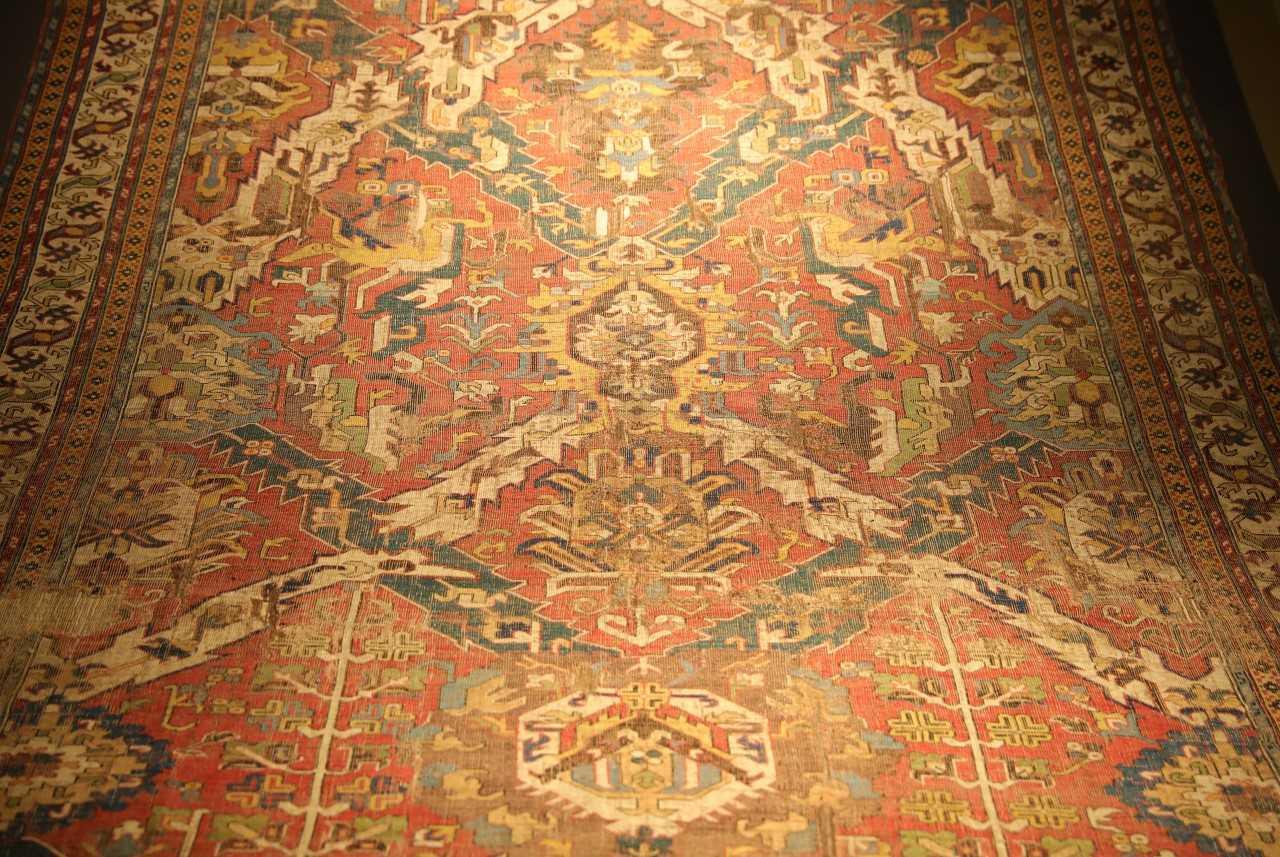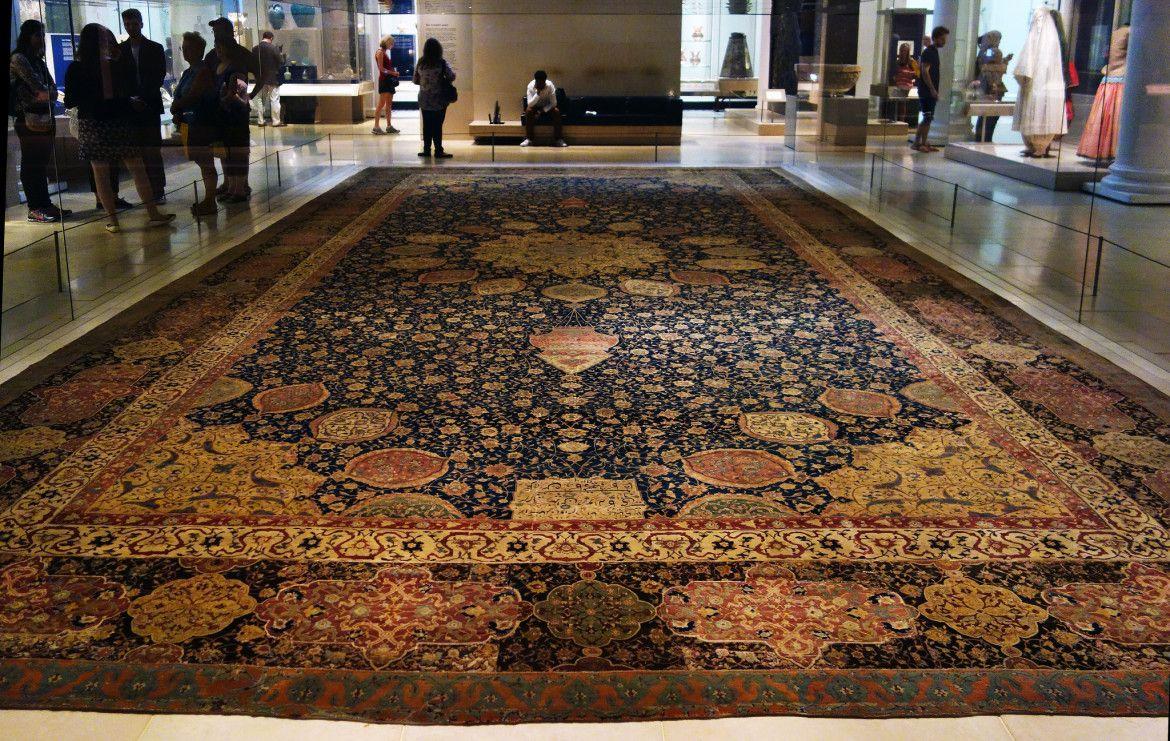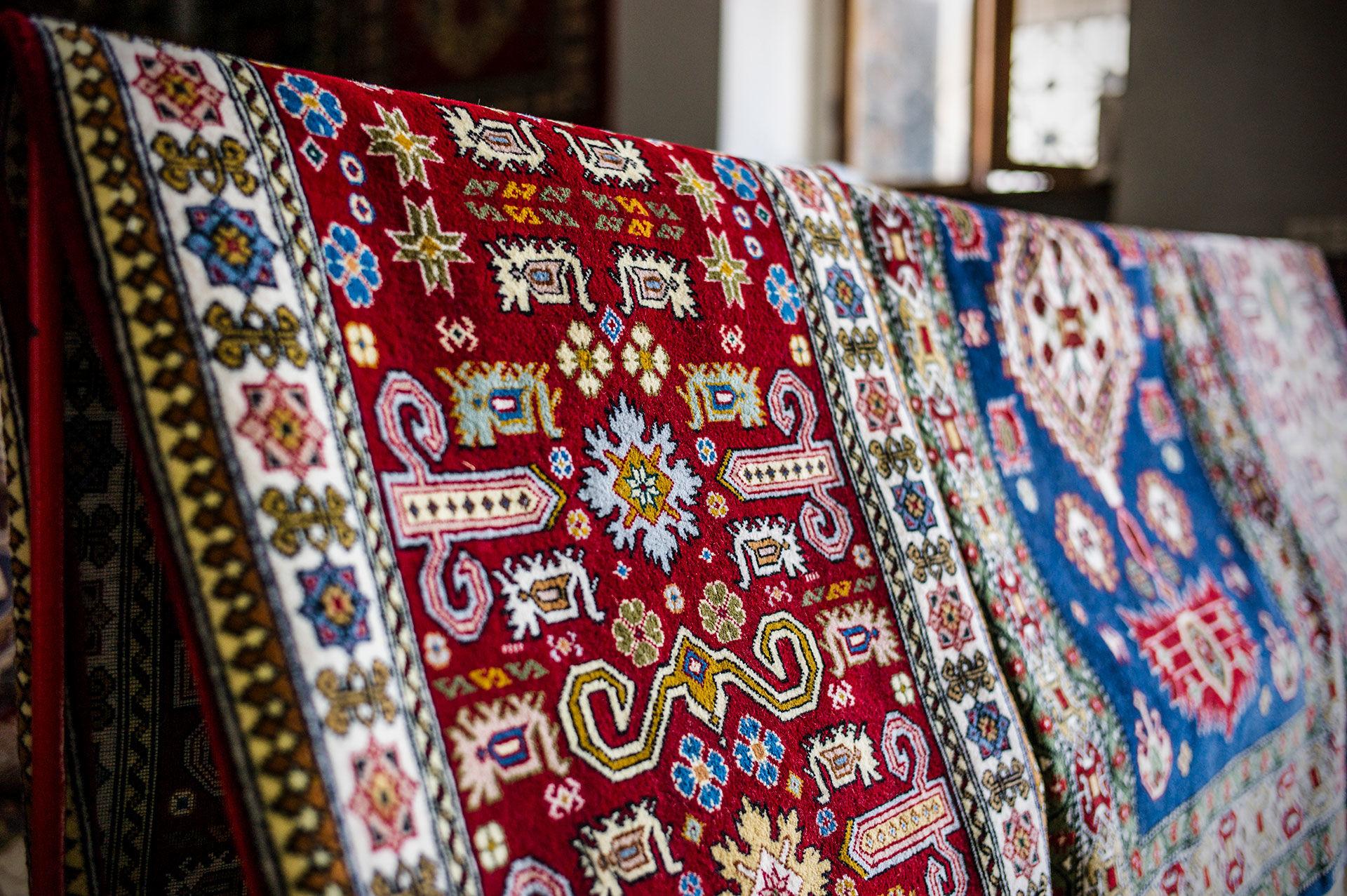From Bronze Age to modern days: Azerbaijan’s ever-living carpets PHOTO
If it is about unique carpets that are second to none in their kind, Azerbaijan catches all eyes on it as the cradle of millennia-old carpet-weaving traditions and schools that add priceless samples to national and global carpets heritage.
Thanks to its unmatched history and ever-living traditions, which still contribute to creating eye-catching samples of Azerbaijani carpets, UNESCO inscribed the Azerbaijani art of carpet-making into the Representative List of Intangible Cultural Heritage of the World in 2010.
On July 20, a new collection of Azerbaijani carpets, featuring the works of 6 artists and 14 carpet weavers, was exhibited at the Heydar Aliyev Center in the capital Baku. The “Azerbaijani carpet – dance of loops” exhibition demonstrated 16 samples of the national carpet-weaving industry, including “Adam and Eve,” “Creation”, “Four Seasons”, and “Birds of paradise” and others.
The fame of the Azerbaijani carpets also went well beyond the country’s borders.
In 2020, the UNESCO headquarters in the French capital city of Paris hosted a flamboyant exhibition demonstrating the Azerbaijani carpets
The exhibition featured the millennia-old carpet-weaving art and peculiar samples of carpets woven by the masters of the South Caucasus nation.
The carpet samples belonging to the Sheki city of Azerbaijan, the historical centre and Khan’s Palace of which were inscribed on the UNESCO World Heritage List last year, took the attention of exhibition participants and guests by storm with their design and elements that can only be seen in Azerbaijan.
Works of 30 local carpet weavers, as well as the French national Philippe Juge, have then been displayed at the weeklong presentation. The primary motifs on the carpets reflected the enigmatic ornaments and frescoes found in the Sheki Khan’s Palace, an exuberant royal palace that was built in the 18th century.
Azerbaijan is considered one of the world’s most ancient cradles of the carpet weaving industry. Archaeological excavations in the territory of the country have revealed the first information about carpet weaving dating back to the 4th and 3rd millennium BC, namely the Bronze Age. Antique historians, including Herodotus, Claudius Elian, Xenophon and others wrote in their books about the existence of well-developed carpet craftsmanship in Azerbaijan. In modern-day Azerbaijan carpet weaving is the most widespread, nationalized and traditional folk art.
Azerbaijani carpets are classified as pile and pileless, according to their raw material and weaving techniques. Silk and wool have traditionally been the most preferred materials in this industry.

The 18th-century "Khatai" carpet of the Karabakh school of carpet-weaving
The pileless carpets belong to the very early period of weaving art’s creation and development. As the most known and widespread types of Azerbaijani carpets, they are identified based on the weaving style, composite structure, ornament richness, and colouring. There are eight basic types of traditional Azerbaijani carpets: palas, dzhejim, lady, kilim, shedde, verni, zili, and sumakh.
Seven specific historical carpet weaving schools – Guba, Shirvan, Baku-Absheron, Ganja, Gazakh, Karabakh, and Tabriz — have been traditionally dealing with carpet weaving. Each school has its own specific style and technique of weaving a carpet. Ornaments of carpets in Guba-Shirvan schools contain stylized vegetative, sometimes zoomorphic motives consisting of geometrical patterns, while Baku-Absheron carpets are unique due to their greater softness, the intensity of colour, originality of art elements and subtlety of patterns. Deep blue and sometimes red and yellow contain the major colour palette of the largest middle segment of Baku-Absheron carpets.
Masters of the Ganja-Gazakh schools are famous for weaving carpets from silk and wool with a rich colour palette created uniquely with only a few colours. Karabakh carpets have the richest colour palette of all, reflecting the most subtle colour shades of the local nature. The main background intermediate spaces of Karabakh carpets are dyed in red which is extracted from various plants, as well as insects such as cochineal.
The most ancient Azerbaijani carpets have been woven in the city of Tabriz, the capital city of East Azerbaijan province of Iran. Piled and pileless carpets of the Tabriz school are distinguished thanks to decoration techniques, the harmony of colours, and a variety of ornaments.

The ancient "Sheikh Safi" carpet preserved at the Victoria and Albert Museum in London
The world’s oldest and largest carpet, dubbed Ardabil or Sheikh Safi, is being kept at the Victoria and Albert Museum in London. The carpet contains 35 million knots and has been woven in the 16th century in Tabriz city. The other version of the Sheikh Safi carpet — a modern one that was produced in 1940 — is exhibited at the Museum of Art of the District of Los Angeles.
Azerbaijani rugs are being kept also in the White House, the US State Department, and dozens of museums including the Metropolitan Museum of Art, the Museum of Fine Arts in Boston, and the Philadelphia Museum of Art.
Today, the largest collection of Azerbaijani carpets is exhibited at the top-notch Museum of Carpets in Baku on Seaside Boulevard. The renovated museum complex inherited its rich stock of carpets from the Azerbaijan Carpets Museum, which was established as the world’s first museum of its kind in 1967.

A carpet woven by the masters of the Guba school of carpet-weaving








